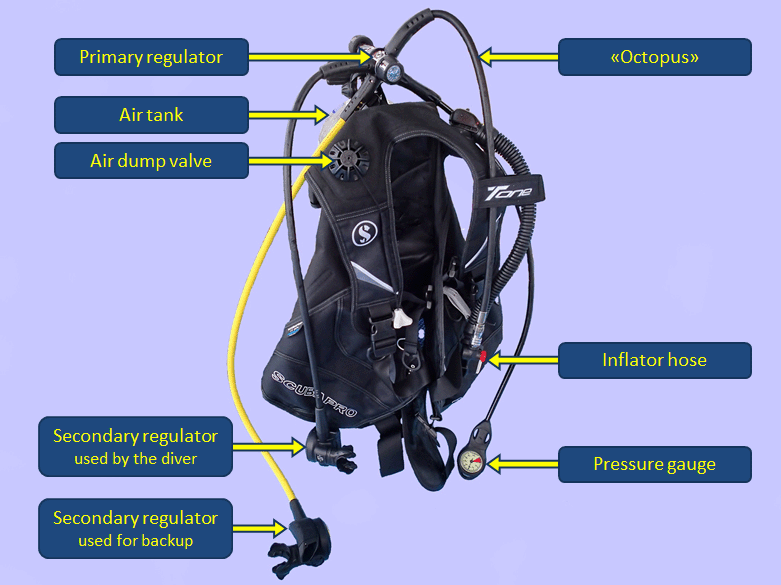BCD
|
The BCD (Buoyancy Control Device) is a vest that is attached to the air tank and secures hoses and accessories, for example a camera. The BCD also have pockets and (in most new models) pouches for ballast, eliminating the need for a weight belt around the diver’s waist.
The BCD is equipped with an air bladder that is used to control the buoyancy of the diver. The diver’s buoyancy depends on the depth he/she is diving and the weight of the equipment. It is also useful to keep the diver afloat after the dive. |
The amount of air in the bladder is controlled with an inflator hose, which has two push-buttons: To inflate the bladder with air from the tank, the diver has to press the “fill” button. To release air from the bladder, the diver must lift up the hose and press the outlet button.
The BCD has two dump valves as well, allowing the diver to release air from the bladder in various positions. One valve is located at the right shoulder, and the other at the bottom of the vest. The latter is often called the “fart valve”. |

